CHAPTER III. EAFM Indicator Assessment Techniques on Fishing
3.1 Data collection technique
In evaluating EAFM indicators in the Fishing Technology domain, primary data obtained through direct field observations and secondary data from available references can be used. Interviews were conducted after determining the selected respondents from the sampling results. It was carried out by face-to-face debriefing utilizing a guide or questionnaire to obtain information according to the purpose of this study. The characteristics of direct interviews are as follows:
1. The interviewer and respondent do not know each other;
2. The interviewer asked the respondent to answer the following;
3. The interviewer is neutral, does not direct the respondent; and
4. The questions asked to follow the guide or questionnaire.
Sampling was done using the stratified random sampling method, in which the interview respondents were determined in stages. This sampling technique pays attention to each population element from each group that does not overlap (homogeneous elements) and must have the same opportunity that can be taken. Strata sampling can use administrative limits or the type of fishing gear used. The allocation of the number of samples from each level is sought using the principle of proportional allocation.
Data collection was carried out to obtain information on each indicator. Each indicator has criteria to determine its status; because each indicator has a different data source, the assessor needs to know where and how it can be obtained.
In measuring the indicators of the Fishing Technology domain, the parameters measured are fishing gear, fishing methods, selectivity and capacity of fishing gear, API productivity, and placement of fishing gear with data collection techniques for each indicator described as follows:
a. Fishing Equipment
Permissible fishing gear indicator data/information can be obtained through the following:
-
Direct observation of fishing areas and/or fishermen's homes to identify the type and selectivity of fishing gear used.
-
Report on the results of monitoring/supervision of capture fisheries from the relevant work unit.
-
Reports on the results of research/studies from research institutes and institutions.education university, or related academics; and/or
-
Results of interviews with other competent respondents
The steps for assigning a criterion value to the permitted API indicators are as follows:
-
Data collection on all types of fishing gear used by fishermen in an inland waters ecosystem;
-
Identification of types of fishing gear that are allowed, data on types of fishing gear that are prohibited, and fishing gear that have not been regulated in Permen-KP Number 18 of 2021;
-
Count the number of fishing gear that is allowed, namely fishing gear that is prohibited and fishing gear that has not been regulated in Permen-KP Number 18 of 2021; And
-
Give the criterion value (nk) of the indicators of the proper fishing gear with the following criteria values:
-
nk = 1, i.e., if there is the use of API that is prohibited or has not been legalized in applicable regulations, >5 types of fishing gear
-
nk = 2, i.e., if there is a use of API that is prohibited or has not been legalized in applicable provisions, 1-5 types of fishing gear
-
nk = 3, if there is no use of the API which is prohibited or has not been legalized in the applicable provisions
Some of the stakeholders who can be used as respondents in assessing fishing gear indicators include:
-
Staff in the Regional Work Unit (SKPD) in the province/regency/city which handles sub-government affairs in the field of capture fisheries;
-
Staff in the related work unit;
-
Academics/researchers from institutions. higher education/other research institutions;
-
Public figure;
-
fishery extension; And
-
Fisherman.
b. Fishing Methods
Data on fishing method indicators can be obtained through the following:
-
Direct observation of fishing areas and/or fishermen's homes to identify fishing methods that are not environmentally friendly;
-
Report on the results of monitoring/supervision of capture fisheries from the related work unit;
-
Reports on the results of research/studies from research institutes, education institutions, or related academics; and/or
-
Results of interviews with other competent respondents
The steps for assigning a criterion value to the fishing method indicator are:
-
Data collection on all methods of fishing carried out in an inland water ecosystem; and
-
Give the criterion value (nk) of the fishing method indicator according to the results of the data collection in number 1, with the following value criteria:
-
nk = 1, that is, if there is a fishing method that endangers the preservation of fish resources because it utilizes a controlled area and catches all trapped fish, for example, lebung and other similar gear
-
nk = 2, i.e., if there is a fishing method that technically endangers the preservation of fish resources, among others, by operating fishing in groups, using pulled fishing gear or other similar gear
-
nk = 3, that is, if no fishing method endangers the sustainability of fish resources
Some of the stakeholders who can be used as respondents in assessing indicators of permitted fishing gear include:
-
Staff in the Regional Work Unit (SKPD) in the province/regency/city which handles sub-government affairs in the field of capture fisheries;
-
Staff in the related work unit;
-
Academics/researchers from institutions of higher education/other research institutions;
-
Public figure;
-
fishery extension; and
-
Fisherman
c. Selectivity and Capacity of Fishing Gear
Selectivity indicator data and fishing gear capacity can be obtained through the following:
-
Direct observation of fishing area centers and/or fishermen's homes to identify the selectivity and capacity of fishing gear;
-
Report on the results of monitoring/supervision of capture fisheries from the related work unit;
-
Reports on the results of research/study from related research institutions, Higher Education institutions, or academics; and/or
-
Results of interviews with other competent respondents
The steps for assigning criterion values to indicators of selectivity and capacity of fishing gear are:
-
Data collection on all selectivity and capacity of fishing gear used by fishermen in an inland waters ecosystem;
-
Separate data on types of selective fishing gear and non-selective fishing gear;
-
Count the number of selective gears in an ecosystem compared to non-selective gears; And
-
Give the value of the criteria (nk) for indicators of selectivity and capacity of fishing gear according to the results of data collection in number 1, with the following criteria values:
-
nk = 1, if the API has selectivity and capacity measures that are not following the rules > 10 units
-
nk = 2, if the API has a measure of selectivity and capacity that does not comply with the rules <10 units
-
nk = 3 if all the APIs used have selectivity and capacity measurements that comply with the rules.
Some of the stakeholders who can be used as respondents in assessing indicators of selectivity and capacity of permitted fishing gear include:
-
Staff in the Regional Work Unit (SKPD) in the province/regency/city which handles sub-government affairs in the field of capture fisheries;
-
Staff in the related work unit;
-
Academics/researchers from institutions of higher education/other research institutions;
-
Public figure;
-
fishery extension; and
-
Fisherman.
d. Fishing Equipment Productivity
Data on fishing gear productivity indicators can be obtained through the following:
-
Direct observation of fishing area centers and/or fishermen's houses to identify API productivity;
-
Report on the results of monitoring/supervision of capture fisheries from the related work unit;
-
Reports on the results of research/studies from related research institutions, higher education institutions, or academics; and/or
-
Results of interviews with other competent respondents
The steps for assigning a criterion value to the fishing gear productivity indicator are as follows:
-
Record of all API productivity data used by fishermen in an inland waters ecosystem;
-
Separate API type data which has high productivity;
-
Count the number of high-productivity APIs; And
-
Give the criterion value (nk) of the API productivity indicator according to the results of the data recorded in number 1, with the following value criteria:
-
nk = 1, if there is the use of an API that has high productivity, >10 units
-
nk = 2, if there is the use of an API that has high productivity, <10 units
-
nk = 3, if there is no use of an API that has high productivity
Some of the stakeholders that can be used as respondents in assessing indicators of permissible fishing gear productivity include:
-
Staff in the Regional Work Unit (SKPD) in the province/regency/city which handles sub-government affairs in the field of capture fisheries;
-
Staff in the related work unit;
-
Academics/researchers from institutions of higher education/other research institutions;
-
Public figure;
-
fishery extension; and
-
Fisherman.
e. Placement of Fishing Equipment
Data on the placement of fishing gear indicators can be obtained through the following:
-
Direct observation of fishing areas and/or fishermen's houses to identify the placement of the fishing gear;
-
Report on the results of monitoring/supervision of capture fisheries from the related work unit;
-
Reports on the results of research/studies from research institutes, high education institutions, or related academics; and/or
-
Results of interviews with other competent respondents
The steps for assigning a criterion value to the fishing gear placement indicator are as follows:
-
Collect all data area of catching fish used by fishermen in an inland waters ecosystem;
-
Identify the placement location API; and
-
Give the criterion value (nk) indicator of API placement is in line with the results of data recorded at number 2, with the following value criteria:
-
nk = 1, if there is the placement of API in important fish habitat (spawning habitat or nursery habitat)
-
nk = 2, if there is an API placement that closes most of the fish routes/migration routes
-
nk = 3, if there is no placement of API which is detrimental to the sustainability of fish resources
Some of the stakeholders who can be used as respondents in evaluating indicators of placement of fishing gear include:
-
Staff in the Regional Work Unit (SKPD) in the province/regency/city which handles sub-government affairs in the field of capture fisheries;
-
Staff in the related work unit;
-
Academics/researchers from institutions of higher education/other research institutions;
-
Public figure;
-
fishery extension; and
-
Fisherman.
3.2 Analysis Techniques
EAFM analysis is a multi-attribute approach to symptoms or performance indications of aquatic ecosystem conditions in general. Substantially, the assessment of EAFM indicators is a system of multi-criteria analysis that culminates in a composite index assessment to determine the status of fisheries management using flag modeling (Adriantoet al., 2005). Data analysis is needed to find out the relationship between the current management performance status based on the data of each indicator in the Fishing Technology domain with recommendations for fisheries management actions that will be developed.
Currently, tools can be used to analyze the condition of EAFM in general and the conditions of each EAFM domain, especially the Fishing Technology domain, using the EAFM indicator assessment matrix (as attached). In detail, the method of calculating the composite value on the indicators and domain of Fishing Technology is described as follows:
a. Permitted Fishing Gear
b. Fishing method
c. Selectivity and fishing gear capacity
d. Productivity fishing gear
e. Placement of Fishing Equipment
The Domain Composite Value (CD) for the Fishing Technology domain can be calculated by adding up all the CI values obtained according to the following formula:
Description:
 = Value composite domain of Fishing Technology
= Value composite domain of Fishing Technology
 = Value composite fishing gear indicator that allowed
= Value composite fishing gear indicator that allowed
 = Value composite fishing method indicators
= Value composite fishing method indicators
 = value composite selectivity and fishing gear capacity indicator
= value composite selectivity and fishing gear capacity indicator
 = Value composite productivity of fishing gear indicator
= Value composite productivity of fishing gear indicator
 = Value composite placement of fishing gear indicator
= Value composite placement of fishing gear indicator
The  value obtained is used to analyze the flag status condition of the fishing technology domain within the framework of implementing fisheries management with an ecosystem approach or the Ecosystem Approach to Fisheries Management (EAFM) in inland waters. The status flag criteria for the fishing technology domain are grouped based on 3 (three) categories (Table 2).
value obtained is used to analyze the flag status condition of the fishing technology domain within the framework of implementing fisheries management with an ecosystem approach or the Ecosystem Approach to Fisheries Management (EAFM) in inland waters. The status flag criteria for the fishing technology domain are grouped based on 3 (three) categories (Table 2).
To conclude the status flags of EAFM in an inland water fisheries management unit, a domain ranking weight (brd) is agreed upon (Table 3) to measure the interaction or influence of each domain.
The influence value of the Fishing Technology domain on the entire EAFM domain  can be determined by multiplying CD2 by the ranking weight for the Fishing Technology domain (brd2), according to the following formula:
can be determined by multiplying CD2 by the ranking weight for the Fishing Technology domain (brd2), according to the following formula:
The flag status criteria for fisheries management conditions in an inland waters ecosystem are grouped into 3 (three) categories (Table 4).
In short, the assessment of the EAFM indicators for the case study in WPPNRI-PD 435 used in the process of input and analysis of the Fishing Technology Domain data can be illustrated as follows (Table 5):
Based on the calculation of the CD2 value above, it is known that the status flag for the Fishing Technology domain is red or deficient. It indicates that the condition of the local Fishing Technology domain has not yet implemented the principles of sustainable fisheries, so it is necessary to establish a strategic plan to improve or enhance the existing domain conditions and indicators.
3.3 Recommendations Results
Recommendations for fisheries management are formulated to determine strategic plans through policies/programs/activities addressing gaps, issues, and problems. Fisheries management recommendations are grouped based on the status flags of each EAFM domain. In general, recommendations for ecosystem-based fisheries management (Table 6).
Meanwhile, recommendations can be applied to the Domain of Fishing Technology (Table 7).

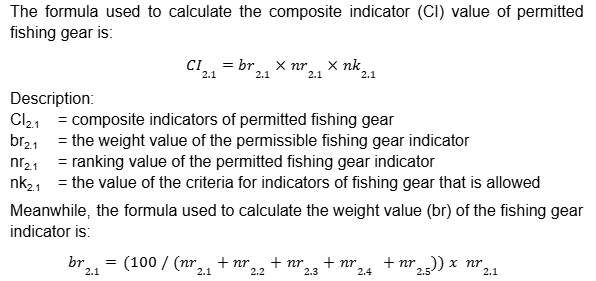
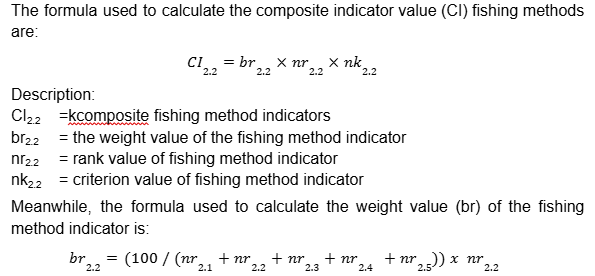
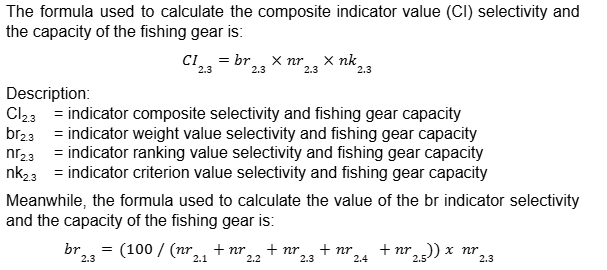
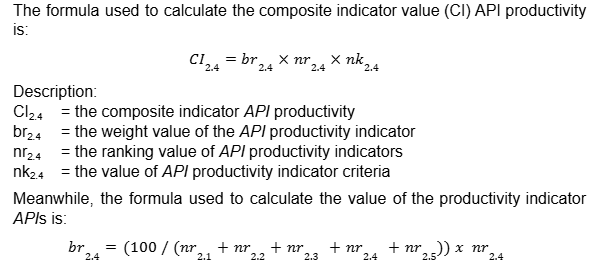
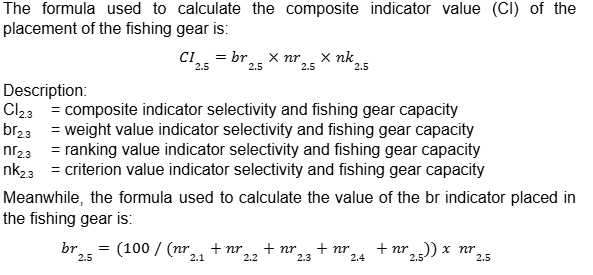
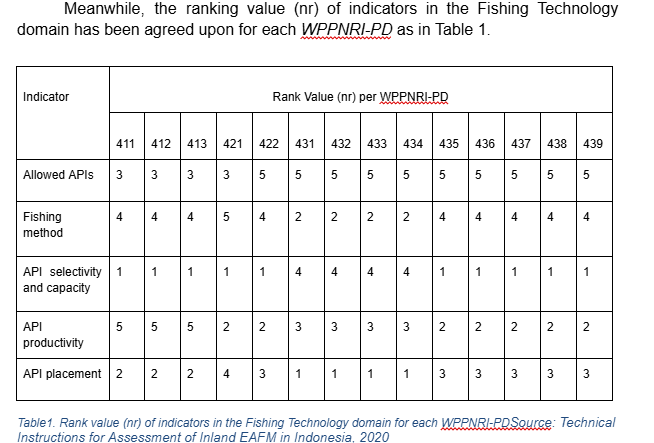


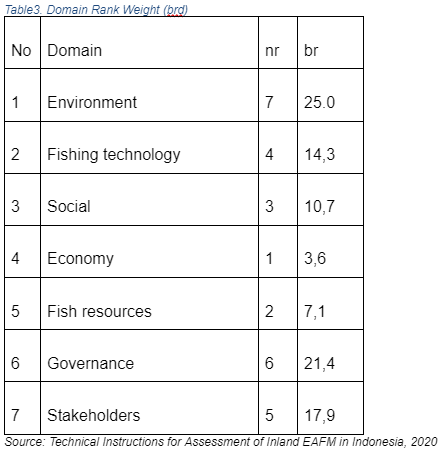
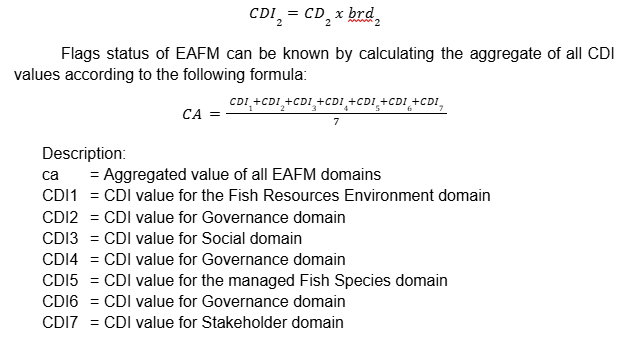
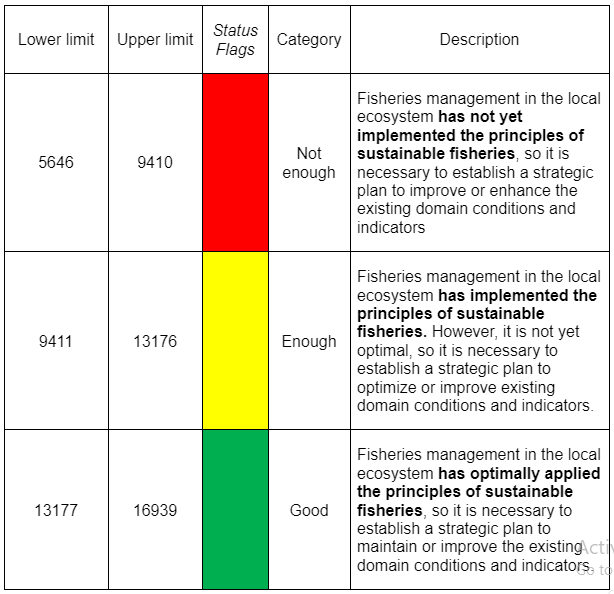

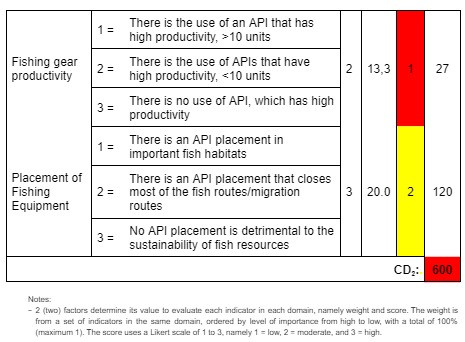

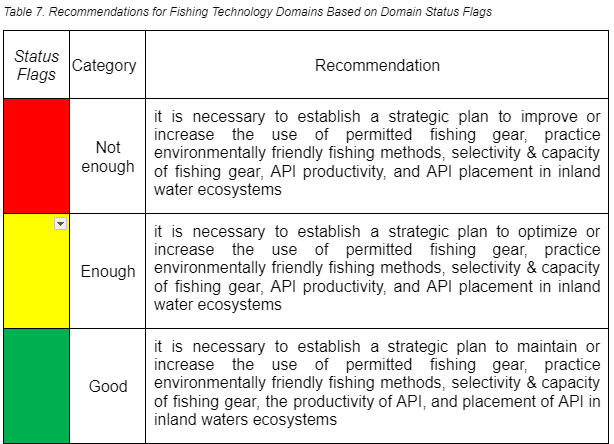
No Comments